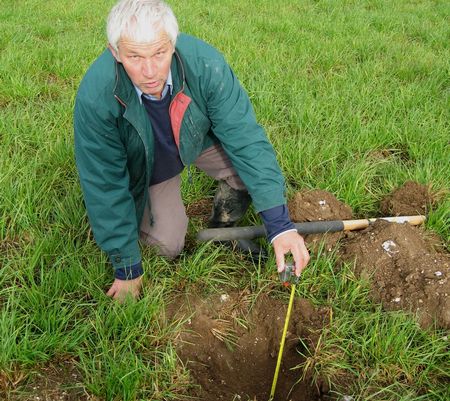Grass needs in-depth assessment

Environmentalists have been encouraging farmers to avoid ploughing grassland, but when it is poached and compacted, it can be beneficial, according to a Catchment Sensitive Farming demonstration site in Dorset.
It is essential to break up the soil pan to allow roots to penetrate soil easily so it can absorb far more water, which should have a positive effect on reducing run-off, Simon Draper of Momenta told visitors. “A well-developed root system should also increase grass yields, as it gives access to nutrients and water deeper in the soil.”
Having over-wintered 200 of his 300 dairy cows on the site, John Elliot of Longlands Farm, Frampton, had a problem last winter with soil run-off when 20mm of rain fell in 20 minutes on the sloping field. In previous years, Mr Elliot had used a Varderstad drill to repair poached land, so this was one of the four methods demonstrated.
“While at first cut this yielded similarly to the other plots, after three cuts it was lowest yielding, at 3.35t/ha,” he said. “When you dug a spade into the soil to look at root structure, roots went down to 22cm.
“This drill hasn’t disturbed earthworm activity, but where there is a pan, earthworms wouldn’t be able to go down either. This shows why digging a hole before deciding on the best treatment for any field is worthwhile. The other thing clear in the hole is at what depth the soil becomes dry. Here it was dry before 30cm down.”
A further option was a £75,000 Cross-Slot New Zealand drill. This plot exhibited good seed emergence and visibly promising signs, yielding at a similar level to the highest-yielding plots.
But on this site, with compaction at 5-8cm, soil was still compacted. Although roots had doubled in depth from early June to September, at just 16cm deep they were the shallowest and soil became dry at the shallowest depth.
Similar in yield at 3.9 and 3.85t/ha were the options of ploughing with subsoiling and subsoiling followed with discs. The ploughed plot displayed a much deeper, fibrous root system.
What Mr Draper believes is more important is subsoiling. “While the roots going down to 23cm were not the deepest on the subsoiled and disced plot, there was a good root system and the depth at which the soil became dry is at a similar level to the ploughing,” he said.
“Subsoiling pasture in spring makes a mess, but where we try it we see a staggering yield response.” He said it would need rolling before cutting silage, and suggested using a para-plough if available.

It is essential to break up the soil pan to allow roots to penetrate soil more easily so it can absorb more water, says Simon Draper.
